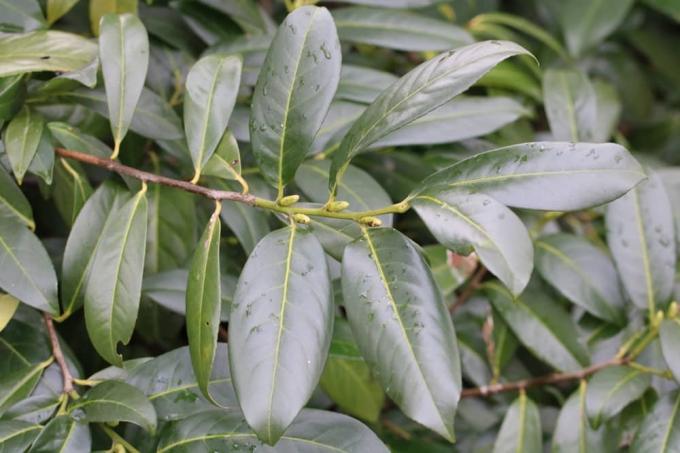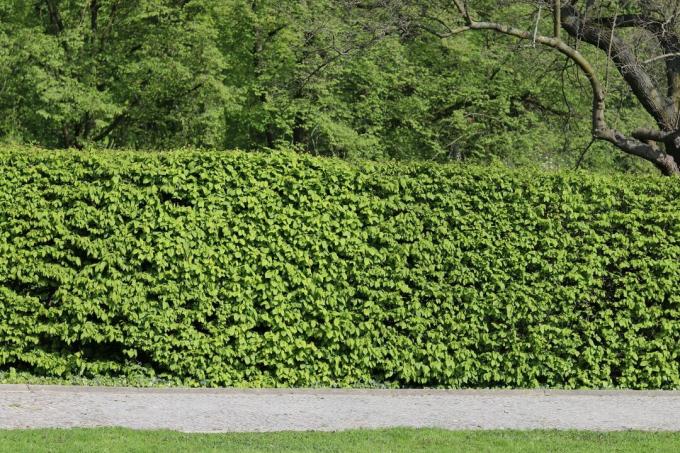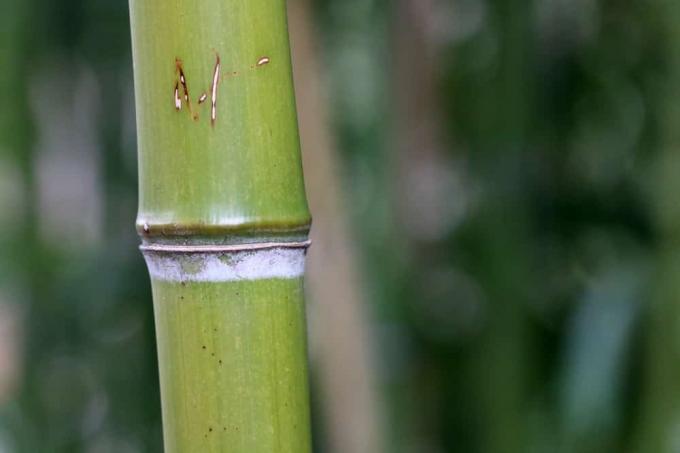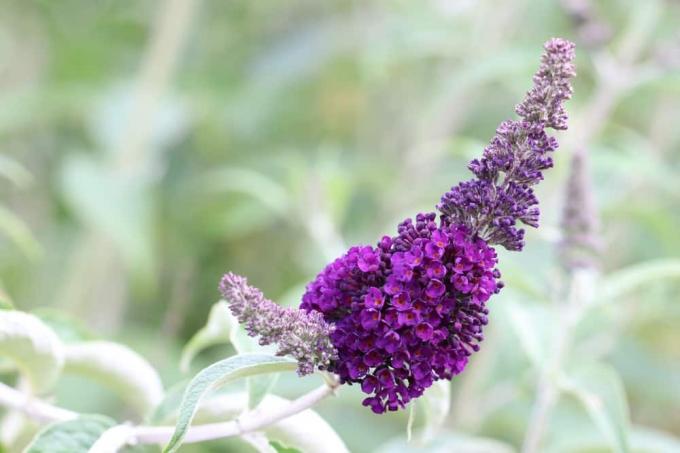

Table of contents
- Planting time autumn
- Planting time spring to summer
- Time of planting cuttings
- planting distance
- Plant
- Location
- soil condition
- differences in purchase
The cherry laurel is a shrub or tree that is wonderfully suited for hedge cultivation. The term laurel is misleading here, because it is an evergreen plant from the plum and cherry family. Due to its acquired frost hardness, it is very popular as a hedge in local latitudes. When is the right time to plant and how ideally to plant is explained in the following article.
Planting time autumn
Early autumn is the ideal planting time for containers and bales, which are usually offered in specialist garden shops. Because when the days get colder, the plants go into hibernation. They no longer sprout and no longer form buds or flowers. At this point, they can put all their energy into forming new roots, which should have grown out of the ball by the start of winter and thus the first frost. So when planting in the fall, the following should be considered:
- early September is ideal
- no frost expected yet
- Roots can spread well
Precisely because the evergreen shrubs evaporate water over the large leaf surfaces even in winter, it is important that the roots have spread well before the first frost and thus absorb the required water can.
Tip:
It has been shown in practice that a newly planted but also an older cherry laurel has hardly any problems with the frost itself in winter and does not die of frostbite. It is much more common for the plants to dry up in winter because they are not provided with enough water.
Planting time spring to summer
Ball or container goods are basically suitable for planting in spring and summer. Because here the roots are already well developed. In this way, the plants can absorb nutrients immediately after planting and do not have to put all their energy into root formation. In the first year, the hedge begins to sprout new shoots, which are then so stable until the first frost in autumn that they can survive the next winter. Above all, the time for planting in spring and summer should be chosen as follows:
- wait for the last frosty nights
- ideal is in May after the ice saints
- do not plant too late in summer
- until June is ideal time
- otherwise too many new shoots will no longer be hardy
Tip:
When buying cherry laurels, the main thing to look out for is the root ball. Because these indicate the quality of the purchased plants. If the quality is very high, the bale will not break when touched and can therefore be placed completely in the planting hole.
Time of planting cuttings

The cherry laurel is also available bare-root as cuttings in stores. Since the propagation of your own plants works quite well with cuttings, you can also grow them yourself. In autumn the cuttings no longer sprout and can therefore put all their energy into root formation. It is ideal if these are planted in the ground in early autumn in September. If this time is missed, then the following should be done:
- cultivate in pots over winter
- place in a frost-free place
- Cuttings can root so well
- keep cool and slightly dark
- plant outside in early spring
- choose a frost-free day
- apply a thick layer of mulch over soil
- protects against frost
The time should be chosen so early in the spring that the cuttings and bare-rooted plants grow trade have the opportunity to grow well before the first buds and leaves sprout begins.
Tip:
If the cuttings are too warm and bright in winter, they may start to sprout. However, through this activity, the required roots are hardly formed.
planting distance
When planting a cherry laurel hedge, you must pay particular attention to the correct planting distance. This is important so that the finished hedge later grows nice and dense, but the individual plants do not get in each other's way and the hedge becomes bare. The young plants from the trade are usually between 40 centimeters and 60 centimeters high. The distance between the individual holes should be between 90 centimeters and 1.10 meters, even if the small plants make it seem as if the hedge is set too far apart. However, the remaining gaps grow quite quickly. The following should therefore be considered when planting distance:
- when planting cherry laurel is very small
- tempted to set the plants close together
- mature plant grows up to three meters high
- Shoots also grow in width
- Cherry laurels grow very densely
- become bushy
- Be sure to keep a distance of about one meter
Tip:
Even if the newly planted cherry laurel hedge looks very thin due to the large distance, it will they will have grown well the next year after planting, holes will already have formed closed. With the right care, the cherry laurel is a fast-growing plant.
Plant

If the cherry laurel hedge is planted, there are other things to consider in addition to the planting distance. The plants do not tolerate waterlogging, so drainage should be created. For this purpose, stones or gravel are placed on the bottom of each planting hole before the cherry laurel is used. This prevents the water from accumulating at the roots, for example when it rains for a long time. When planting, the following should also be considered:
- deep and permeable soil
- prepare the soil if necessary
- Mix in the compost
- possibly add sand or clay
- dig a big hole
- Root ball must find enough space
- Carefully insert the cherry laurel
- immerse the root ball in a water bath beforehand
- fill the hole with the prepared soil
- Firm and water the soil well
After planting, it helps to spread a layer of mulch around the plants to keep moisture in the soil. In addition, the young cherry laurel is supplied with additional nutrients.
Location
The cherry laurel is often used for a hedge, as it can get along in almost any location. So it can thrive in sunny places just as well as in semi-shady and even predominantly shady locations. So it is suitable for the following locations in the garden:
- as a privacy screen to the neighboring property
- can also be in full sun
- also under trees
- as a property boundary to the street
- on a terrace as a privacy screen
The cherry laurel is not well suited as a windbreak. Because of the high density of its leaves, the wind accumulates behind the hedge and is pushed upwards. In this way, the wind comes unhindered over the upper edge, so sitting comfortably in front of the hedge is not guaranteed. Therefore, when choosing the location for the hedge, care should be taken to ensure that it is not in a very draughty corner in which a seat may be created.
Tip:
The only location that the cherry laurel does not tolerate is in the deep shade, for example on the north side of a house front or under very high, dense trees.
soil condition
The easy-care cherry laurel makes few demands on the soil. So it can be offered nutrient and humus-rich loamy soil as well as a slightly dry, sandy soil. The pH of the soil may also vary between alkaline and moderately acidic. The cherry laurel hedge is suitable for almost any soil in the garden and can be used as a privacy screen in many places. The following properties are also desired from the cherry laurel substrate:
- no waterlogging
- no compacted soil
- well drained soil is ideal
Tip:
On sandy soil, the cherry laurel becomes more frost hardy, as the new shoots lignify earlier in the fall and become more winter hardy.
differences in purchase

Container or bale goods or rather bare-rooted. There are differences when buying the cherry laurel. Because the ideal planting time also depends on the goods. But not only the time is an important point in the decision, the quality of the goods can also be very different here and thus also the price. If the length of the hedge and the required planting distance are calculated in advance, it is easier to choose one product or the other. The main characteristics of the different products are the following:
- bare root plants are sold without soil
- are the cheapest goods
- useful for a very long cherry laurel hedge
- Baled goods are dug out of the field with earth
- this is usually sold in an iron basket
- often also in the linen cloth
- can be planted in the hole with soil, basket or cloth
- the purchase is medium-priced
- Container goods are expensive
- is sold in the pot with soil
Tip:
Even if container ware is the most expensive variant, it is usually also the best quality as far as the roots are concerned. Because container goods are grown in the pot in which they are later sold. This means that roots were not damaged, as can be the case when cutting out the root ball. In addition, container goods can be planted in the garden all year round.
 garden editorial
garden editorial I write about everything that interests me in my garden.
Learn more about hedges

Hornbeam hedge: 17 tips for care
Hornbeams (Carpinus betulus) are most commonly used as topiaries or hedge plants. They are actually not beeches at all, but belong to the birch family. The hornbeam is very robust, easy to care for and, in contrast to the common beech, not poisonous.

How fast does bamboo grow? | Information about growth
In domestic gardens, bamboo is usually used as a privacy screen or as a decorative solitary plant. The rapid growth, which can reach several cm a day, is impressive. It depends on the bamboo variety, care and the prevailing microclimate.

How fast does cherry laurel grow? | accelerate growth
The cherry laurel is a fast and densely growing tree. After planting, it usually only takes a few years for the young plants to grow into a tall, dense and evergreen hedge. In addition, growth can be accelerated by additional precautions.

Creating a mixed colorful hedge: 9 ideas for a mixed hedge
If you don't like it monotonous, you can also create a mixed hedge instead of a hedge from a single, evergreen plant species. There is a wide range of colorful hedges to choose from. There are special flowering hedges, ones for birds, scented ones, or for insects and butterflies.

Yellow cypress | 9 tips for care, pruning & growth
The yellow cypress is one of the most common hedge plants in our gardens. No wonder: it combines a great look with an opaque growth. How to properly care for them, cut them and generally promote their growth is here.

Thuja brabant turns brown or yellow: what to do? 8 common causes
When Thuja brabant turns yellow or brown, various factors can be responsible - but care mistakes are often the trigger. We reveal which factors are involved and how they can be counteracted.



